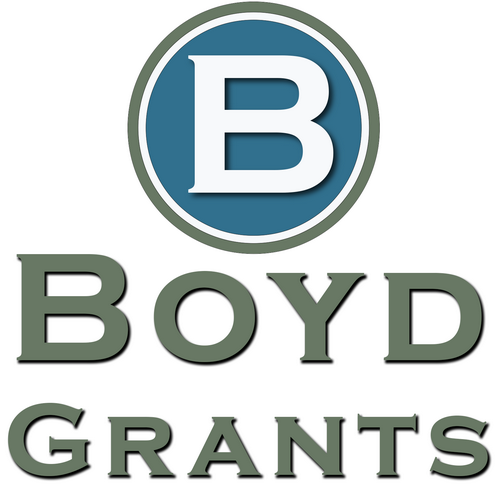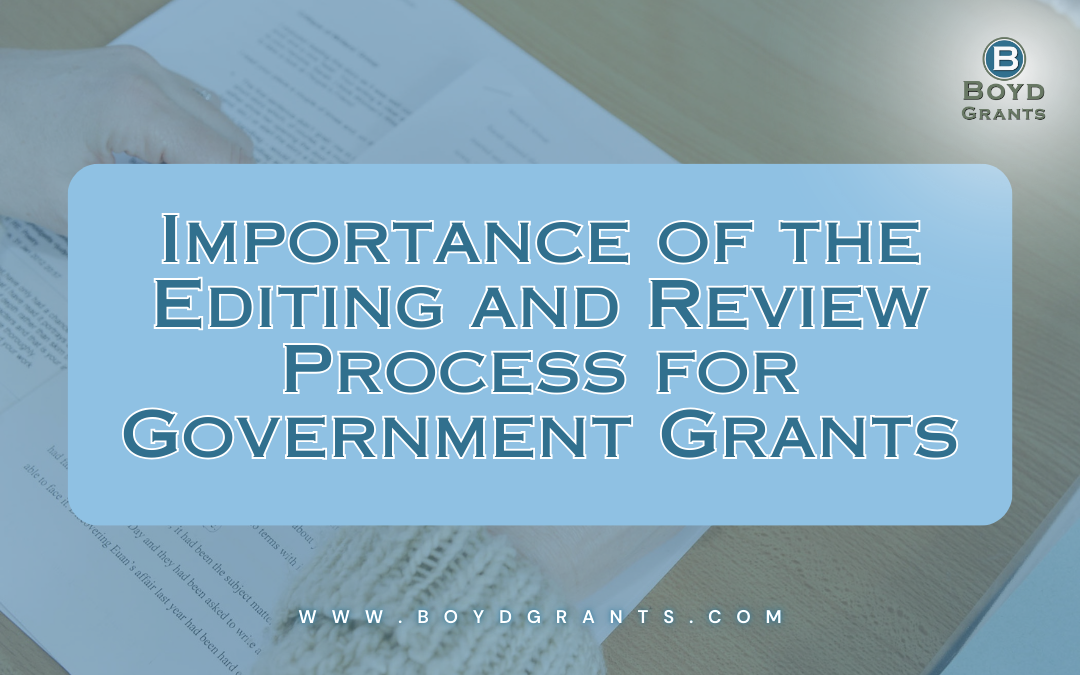Importance of the Editing and Review Process for Government Grants
The editing and review process for a government grant proposal is critical to ensuring that the proposal is polished, coherent, and ready for submission. Government grant reviewers expect clarity, accuracy, and professionalism, as these qualities reflect on the applicant’s ability to manage the project and follow instructions. This process significantly influences the overall success of the proposal and, ultimately, whether the grant is awarded.
Here’s a deeper look into the importance of this process, particularly in the context of government grants:
1. Importance of Accuracy and CompletenessEnsuring Correct and Relevant Information
- Accuracy of Data:
- Government grants often require very specific data, such as organizational history, financial information, project milestones, and team qualifications. Any inaccuracy can lead to disqualification or a loss of credibility. For instance, listing incorrect project costs or misrepresenting a team member’s qualifications may undermine the trustworthiness of the entire proposal.
- Example: If the proposal incorrectly cites the budget for a particular program component, reviewers may question the applicant’s ability to manage project finances, jeopardizing the proposal’s chances for funding.
- Completeness of Information:
- All sections of the proposal must be fully addressed. A missing section or overlooked requirement could lead to disqualification, even if the rest of the proposal is strong.
- Example: If the Key Personnel section is incomplete (e.g., leaving out a consultant’s role), the grant review team may not understand how the project will be executed or the expertise available to support it, which could affect the proposal’s evaluation.
2. Review for Accuracy of Information and Consistency of FormattingReviewing for Consistency Across the Proposal
- Consistency in Terminology:
- Consistent terminology across all sections of the grant proposal is crucial. Using different terms for the same concept can confuse the reviewer and create an impression of carelessness or lack of cohesion in the project’s design.
- Example: Referring to the project director as both “Dr. Smith” and “Project Manager” within the document may confuse reviewers, who may then be unclear about the role and authority of the individual in the project.
- Formatting Consistency:
- Government grants often come with specific formatting guidelines (e.g., font type, font size, margins). Failure to adhere to these guidelines can result in penalties or automatic rejection of the application.
- Example: If the proposal is supposed to be in 12-point Times New Roman font but is submitted in 11-point Arial, it may be discarded or lose valuable points on adherence to submission rules.
Double-Check for Correctness
- Spelling and Grammar:
- Even small spelling or grammatical errors can make a proposal appear less professional, potentially undermining the reviewer’s confidence in the applicant’s capabilities. A simple typo in a grant proposal could even result in miscommunication of a key project objective or budget.
- Example: A misspelling of the funding agency’s name or a technical term could signal a lack of attention to detail, making it difficult for reviewers to take the proposal seriously.
- Confirm Financial Details:
- The financial section, especially the budget, needs careful review. Ensure that the math adds up and that figures in different sections of the proposal align correctly.
- Example: If the budget section shows $200,000 allocated for personnel costs, but other sections list $220,000, this discrepancy would raise a red flag for reviewers.
3. Seek Feedback from Team Members or ColleaguesIncorporating Diverse Perspectives
- Collaborative Feedback:
- Getting input from team members who have different areas of expertise can help spot errors, gaps, or areas for improvement that the lead writer might miss. For instance, a financial officer can ensure budget details are accurate, while a subject-matter expert can confirm that technical descriptions are correct.
- Example: If a grant proposal discusses a technical aspect of the project that is outside the primary author’s expertise, a colleague with technical experience might catch mistakes or offer more precise language to ensure the proposal’s accuracy.
- Fresh Eyes on the Proposal:
- Having someone who hasn’t been deeply involved in the writing process review the document can provide fresh insights. They might spot unclear sections, overly complex language, or sections that need further elaboration.
- Example: A colleague from a different department can offer a new perspective on whether the project’s objectives are clearly communicated, ensuring that the language resonates with the intended audience of grant reviewers.
4. Revise as Needed to Strengthen the NarrativeImproving Coherence and Flow
- Strengthening the Narrative Arc:
- The proposal should tell a coherent story from start to finish. Revising to improve the logical flow between sections can help reviewers better understand how the project will unfold and how the team is qualified to execute it. The proposal should have a clear introduction, project description, expected outcomes, and a conclusion that ties everything together.
- Example: If the introduction briefly mentions the problem but the body doesn’t fully elaborate on the solution, revising the narrative to create a logical flow of ideas will help reviewers follow the proposal’s logic more easily.
- Eliminating Redundancy:
- Often, proposals become overly verbose or repetitive. Streamlining the document by cutting redundant information will make it more impactful. This also helps ensure that reviewers can quickly get the most important information without having to sift through unnecessary details.
- Example: If the budget justification repeats details that are already covered in the main proposal, trimming those sections helps make the proposal more concise and focused.
Final Check for Adherence to Guidelines
- Adherence to Grant Instructions:
- The editing process ensures that the proposal meets all submission instructions provided by the funding agency. Grant proposals often have specific sections, word limits, and page lengths. A final review ensures that all requirements are met.
- Example: If the grant requires a one-page summary of the project, a final revision should ensure this summary is concise, on point, and well within the page limit.
Importance of the Editing and Review Process in the Competitive Grant Landscape
Government grants are highly competitive, and even minor errors or omissions can put your application at a disadvantage. A thorough editing and review process ensures that your proposal presents the project in the best possible light. When the application is accurate, cohesive, and aligns with the funder’s priorities, it demonstrates professionalism and significantly improves the chances of being awarded the grant. By taking the time to review and revise the document carefully, applicants ensure that they maximize their proposal’s potential.
In conclusion, accuracy, completeness, and clarity are non-negotiable when preparing a government grant proposal. By engaging in a detailed review process—checking facts, seeking input from team members, and refining the narrative—applicants can submit a polished, compelling proposal that stands out in a competitive funding environment.


Recent Comments